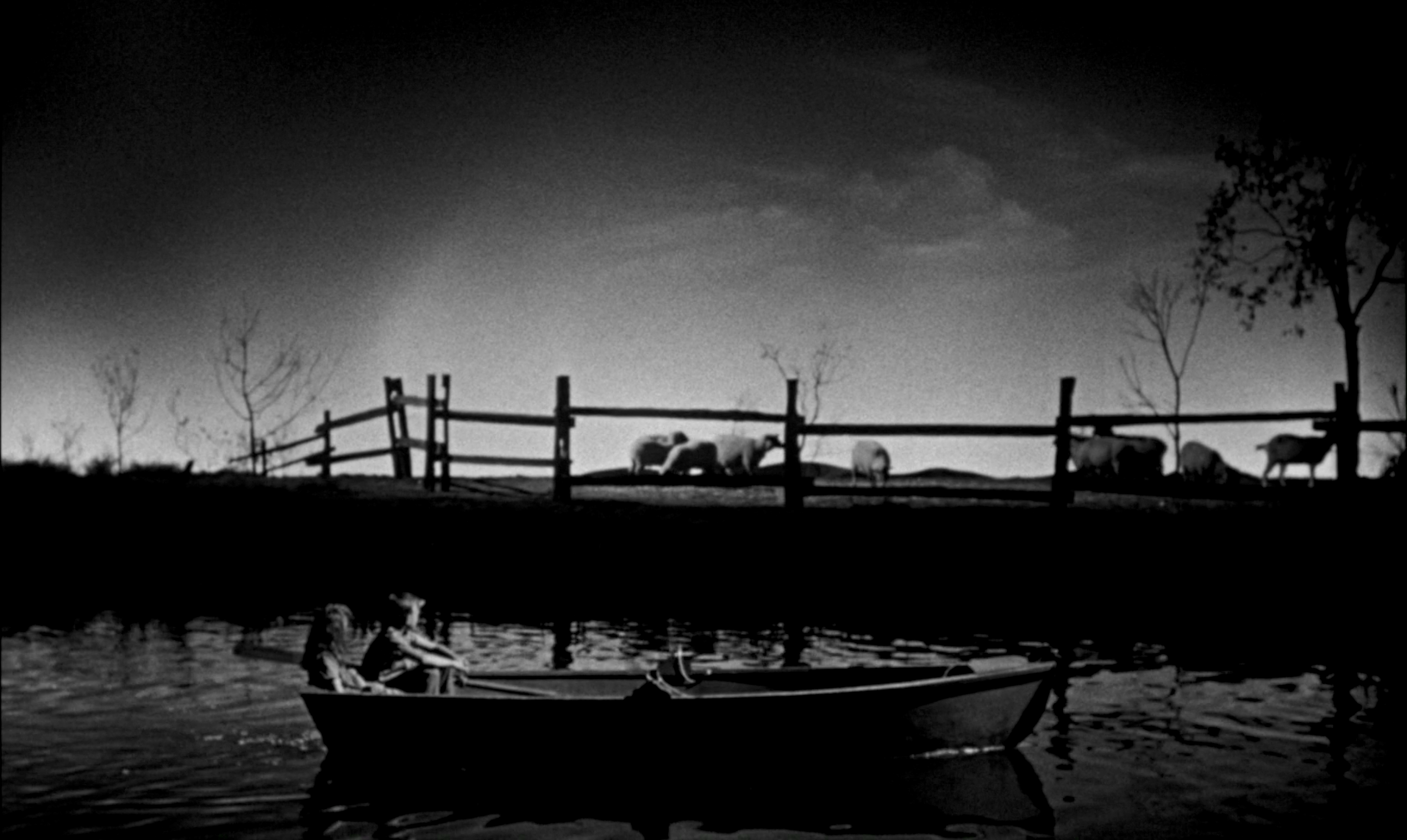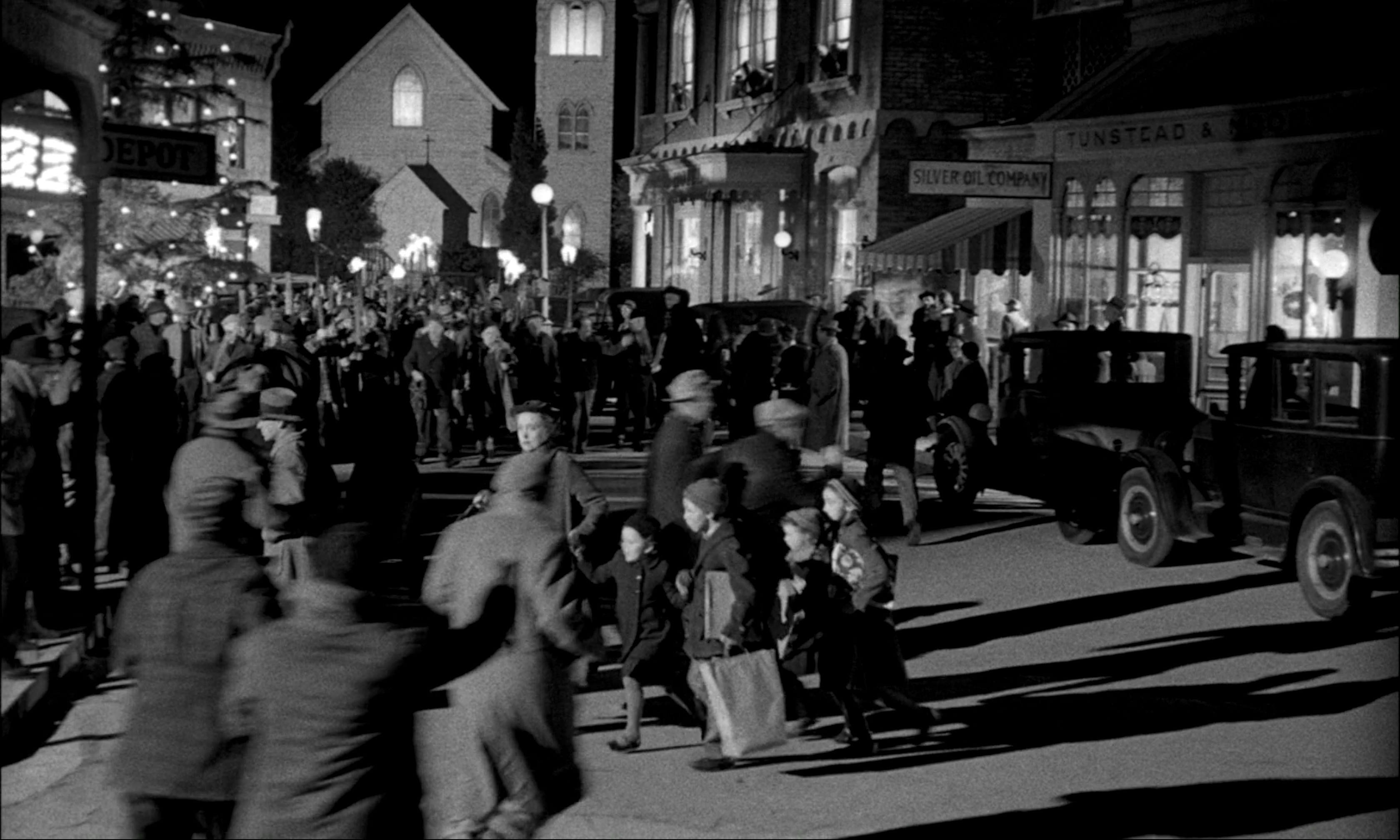"The Furniture," by Daniel Walber, is our weekly series on Production Design. You can click on the images to see them in magnified detail.

Charles Laughton’s The Night of the Hunter is an American classic. But it is also a clear descendant of a movement from across the Atlantic: German Expressionism. This comes through most clearly in the breathtaking work of cinematographer Stanley Cortez (The Magnificent Ambersons).
Yet while The Night of the Hunter’s visual language is clearly indebted to the German films of the 1920s, its sets are far cry from the angular nightmares of The Cabinet of Dr. Caligari and its siblings. Instead, the work of art director Hilyard M. Brown and set decorator Alfred E. Spencer is grounded in iconic American architecture. Through the intimate collaboration of production design and cinematographer, an Expressionist battle between good and evil unfolds through the aesthetic material of American life...
Mitchum’s Harry Powell is a Fallen Angel of the Mississippi, a creature who perverts images of American morality by his physical presence. Shadows follow him across the heartland, a shiver across the chest of the continent. Under the lantern, he threatens to smash through the flimsy protection of a white picket fence.
Later in the film, the neon lights of Main Street work in concert with Powell as he seduces information out of the young Ruby.
His comfort, perched amid these visual allegories of American family and commerce, makes us uneasy. By all rights they should spit him out with disgust, yet he somehow persists.
This is never more terrifying than in the murder scene. Before Powell kills Willa (Shelley Winters), he stands above the bed, arm extended to the heavens. The bedroom resembles the steeple of a church, its lone window allowing in the moonlight. Even here, in this domestic and Christian space, Powell is at home.
Soon after, the children flee into the calm embrace of the Mississippi River. Far from the all-too-vulnerable architecture of the family home, the main street and the church, the natural world offers them freedom and peace.
Of course, this temporary utopia is as meticulously designed as the buildings. The river was built on a soundstage. It is no accident that the children pass directly under this spiderweb, a much more assuring shield than the fence.
They float beneath an intimate, if artificial sky. The flat, abstract horizon of the matte paintings offers a unique security, closing the children off from the threats of the human world.
The river leads to a small farm. Instantly recognizable as a symbol, yet asymmetrical enough to suggest abstraction, it reminds one of the Isamu Noguchi set for Martha Graham’s production of Aaron Copland’s Appalachian Spring, which premiered in 1944.
But this is only a moment, and soon the children return to their flight. They find themselves protected by Mrs. Cooper (Lillian Gish). The final confrontation with Powell occurs here, ending in his arrest. But that is not quite the last word. There remains his trial, a deranged sequence that exposes the rage bubbling beneath all the institutions that were infiltrated by Powell in the first half of the film.
In one remarkable shot, Cortez follows Mrs. Cooper and the children as they flee the courthouse. Main street is lit up by torches. Order evaporates and the mob shouts for blood. The shops and the church look on with equal impotence.
The kids aren’t saved by America’s institutions, but rather by the determined faith of a single woman. And Mrs. Cooper, despite her frequent quoting of the Bible, seems to have little connection to any established church. Instead, she finds salvation through scripture and faith alone. Her message is clear from the film’s premonitory beginning, when she speaks in front of a field of stars.
Like the sequence at the river, this backdrop is self-evidently artificial. But, like the matte paintings of faraway locales in Black Narcissus or Brigadoon, this artificiality does more to advance metaphor than even the most gorgeous on-location cinematography ever could. Its artificiality is an artistic exaggeration, a compelling signpost on the way to revelation and faith. It’s a beacon of hope in a brutal film, a picket fence between honesty and nihilism.








